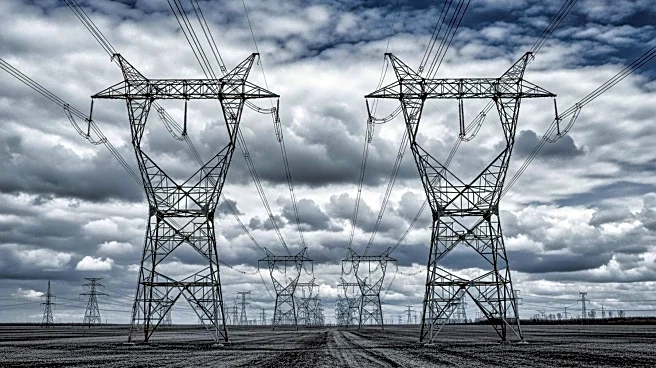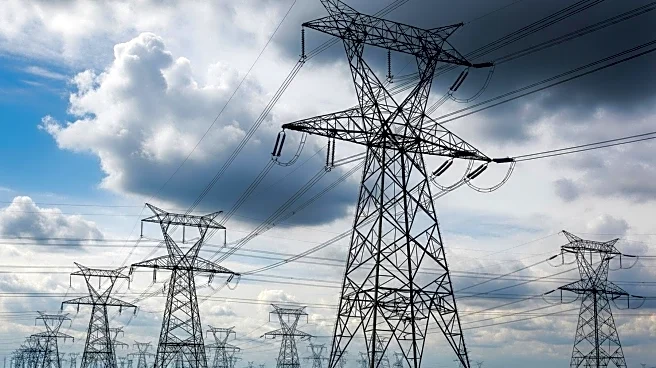What's Happening?
PJM Interconnection, a regional transmission organization in the U.S., is experiencing unprecedented capacity market prices due to significant load growth. The capacity market auction for the 2025-2026 delivery year cleared at $269.92/MW-day, a tenfold increase from the previous year, and the 2026-2027 auction reached the market price cap of $329.17/MW-day. This surge is driven by increased electricity demand from data centers and artificial intelligence operations, which require substantial energy. The demand response programs, which pay businesses to reduce electricity consumption during peak periods, are being highlighted as a valuable alternative to new generation. However, demand response participation has remained flat, indicating a need for more large energy users to adopt flexibility strategies.
Why It's Important?
The rising capacity prices in PJM Interconnection signal a broader transformation in the U.S. energy grid, where traditional assumptions about electricity demand are being challenged. The digital infrastructure boom is creating a fundamentally different load profile, necessitating a shift towards flexible and dynamic electricity demand management. This situation presents opportunities for energy users who can adjust their consumption patterns, potentially earning revenue while contributing to grid reliability. The high prices also reflect the urgency for grid operators to incorporate demand-side flexibility as a reliable resource, which could be more cost-effective than building new power plants.
What's Next?
As PJM's reserve margin becomes slimmer, there is an increased urgency for large energy users to implement demand response strategies. The ongoing digitalization and changing generation mix will continue to evolve the grid, requiring energy users to adapt their operations to market dynamics. Stakeholders, including grid operators and utilities, will need to incentivize flexibility and demand response participation to balance supply and demand effectively.











